Abstract
Mutual effects between Mn, Ca, and Mg were studied during steady-state absorption experiments with excised barley roots. Calcium appeared to enhance the rate of Mn absorption; whereas, Mg had a highly depressive effect. The combination of both Ca and Mg was even more inhibitory to Mn absorption than Mg alone. Manganese had no effect on the usual negligible Ca absorption by this tissue, but effectively inhibited the absorption of Mg. Although divalent cation absorption from the Ca-Mg-Mn system was essentially nil, K absorption was greatly stimulated in the presence of these cations.
These mutual effects and others reported in the literature are explained by the hypothesis that selectivity in ion absorption results from cation-induced conformational changes in the structure of the carrier molecule.
Full text
PDF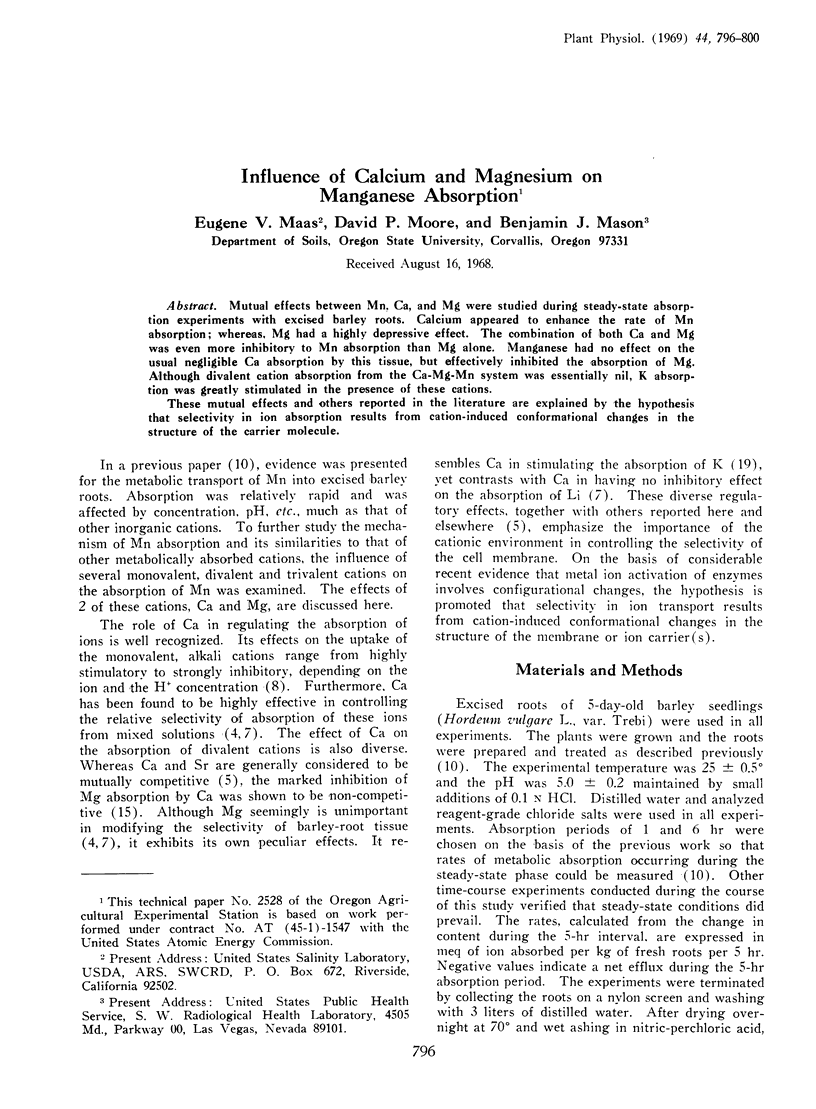
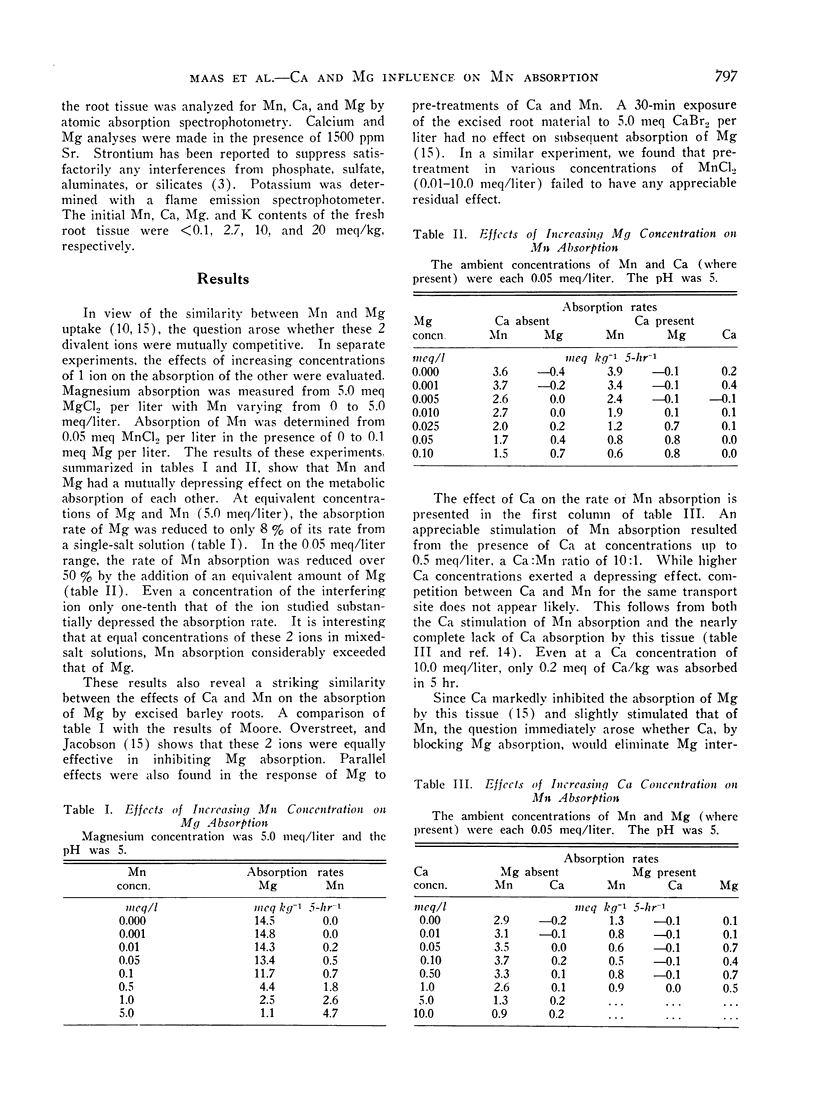
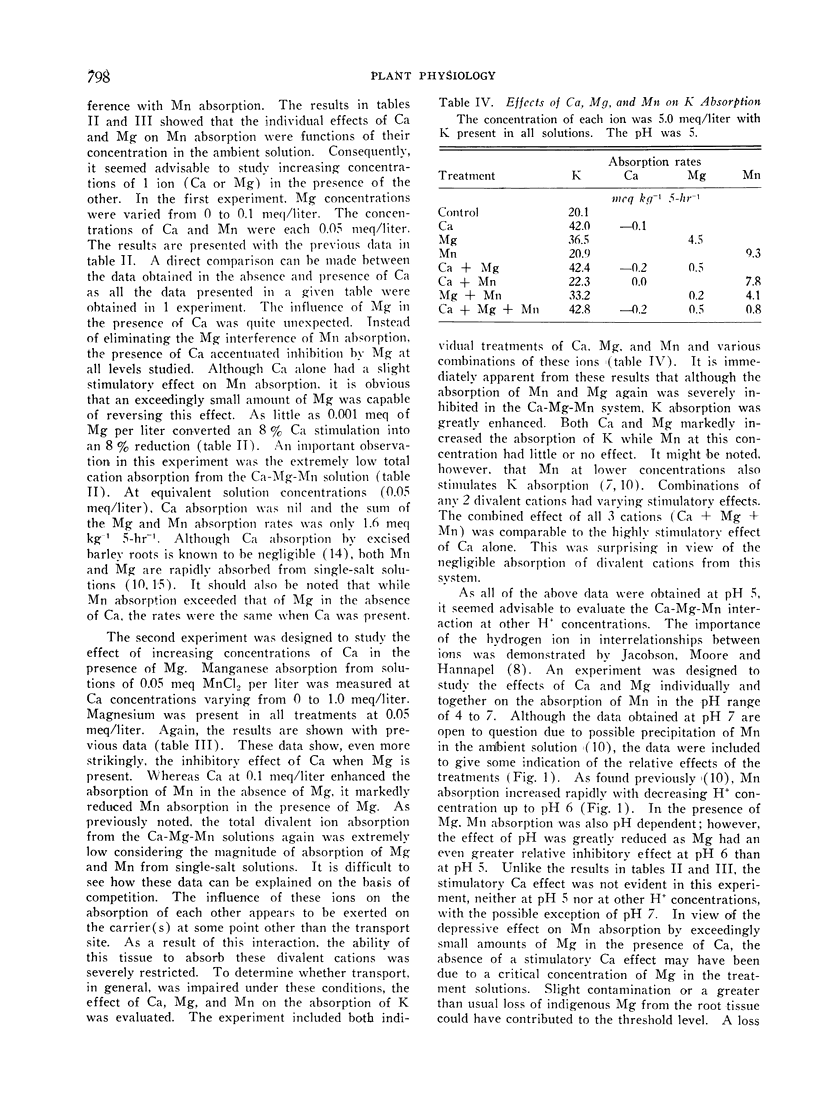
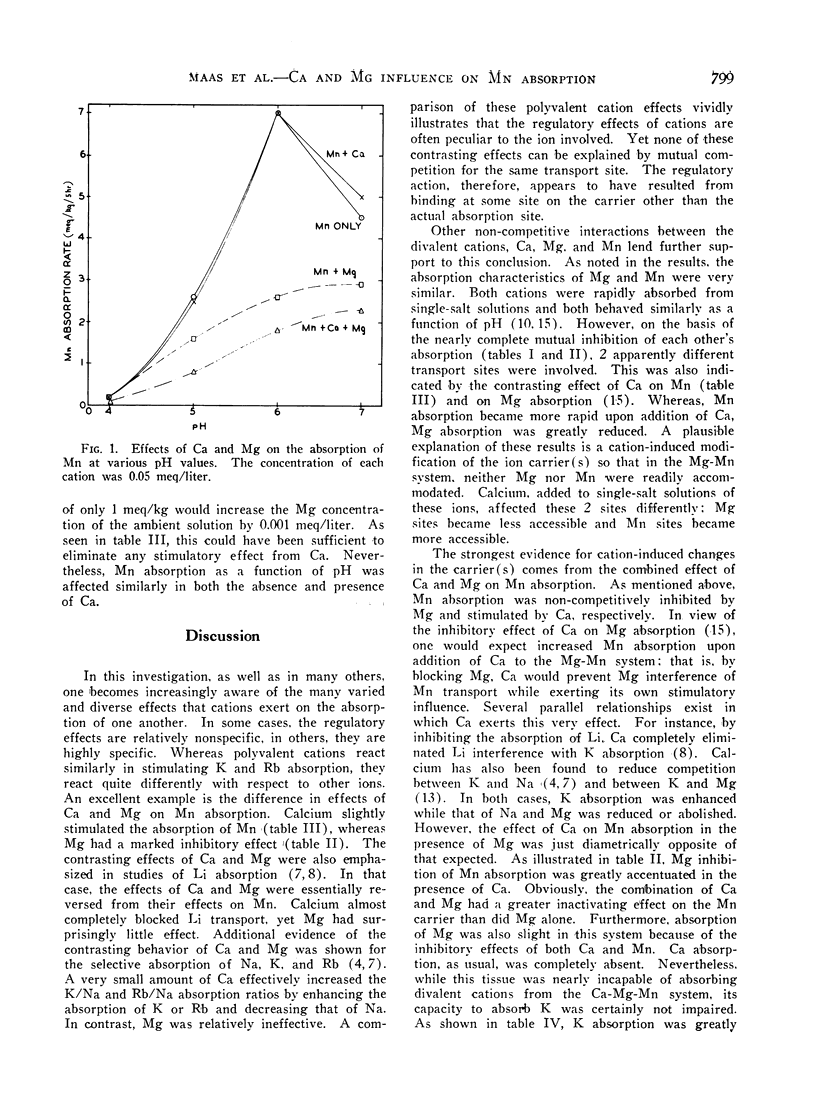
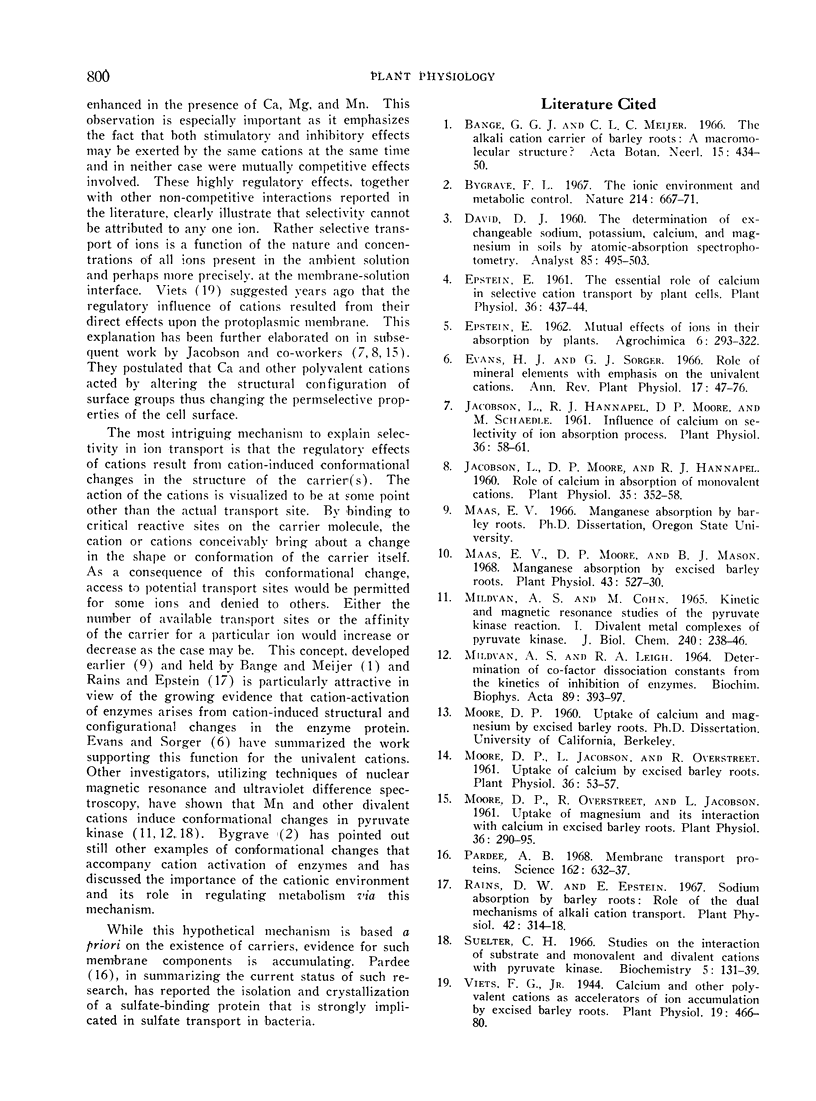
Selected References
These references are in PubMed. This may not be the complete list of references from this article.
- Bygrave F. L. The ionic environment and metabolic control. Nature. 1967 May 13;214(5089):667–671. doi: 10.1038/214667a0. [DOI] [PubMed] [Google Scholar]
- Epstein E. The essential role of calcium in selective cation transport by plant cells. Plant Physiol. 1961 Jul;36(4):437–444. doi: 10.1104/pp.36.4.437. [DOI] [PMC free article] [PubMed] [Google Scholar]
- Jacobson L., Hannapel R. J., Moore D. P., Schaedle M. Influence of calcium on selectivity of ion absorption process. Plant Physiol. 1961 Jan;36(1):58–61. doi: 10.1104/pp.36.1.58. [DOI] [PMC free article] [PubMed] [Google Scholar]
- Jacobson L., Moore D. P., Hannapel R. J. Role of Calcium in Absorption of Monovalent Cations. Plant Physiol. 1960 May;35(3):352–358. doi: 10.1104/pp.35.3.352. [DOI] [PMC free article] [PubMed] [Google Scholar]
- MILDVAN A. S., COHN M. KINETIC AND MAGNETIC RESONANCE STUDIES OF THE PYRUVATE KINASE REACTION. I. DIVALENT METAL COMPLEXES OF PYRUVATE KINASE. J Biol Chem. 1965 Jan;240:238–246. [PubMed] [Google Scholar]
- MILDVAN A. S., LEIGH R. A. DETERNATION OF CO-FACTOR DISSOCIATION CONSTANTS FROM THE KINETICS OF INHIBITION OF ENZYMES. Biochim Biophys Acta. 1964 Sep 18;89:393–397. doi: 10.1016/0926-6569(64)90065-3. [DOI] [PubMed] [Google Scholar]
- Maas E. V., Moore D. P., Mason B. J. Manganese absorption by excised barley roots. Plant Physiol. 1968 Apr;43(4):527–530. doi: 10.1104/pp.43.4.527. [DOI] [PMC free article] [PubMed] [Google Scholar]
- Moore D. P., Jacobson L., Overstreet R. Uptake of calcium by excised barley roots. Plant Physiol. 1961 Jan;36(1):53–57. doi: 10.1104/pp.36.1.53. [DOI] [PMC free article] [PubMed] [Google Scholar]
- Moore D. P., Overstreet R., Jacobson L. Uptake of magnesium & its interaction with calcium in excised barley roots. Plant Physiol. 1961 May;36(3):290–295. doi: 10.1104/pp.36.3.290. [DOI] [PMC free article] [PubMed] [Google Scholar]
- Pardee A. B. Membrane transport proteins. Proteins that appear to be parts of membrane transport systems are being isolated and characterized. Science. 1968 Nov 8;162(3854):632–637. doi: 10.1126/science.162.3854.632. [DOI] [PubMed] [Google Scholar]
- Rains D. W., Epstein E. Sodium absorption by barley roots: role of the dual mechanisms of alkali cation transport. Plant Physiol. 1967 Mar;42(3):314–318. doi: 10.1104/pp.42.3.314. [DOI] [PMC free article] [PubMed] [Google Scholar]
- Suelter C. H., Singleton R., Jr, Kayne F. J., Arrington S., Glass J., Mildvan A. S. Stuies on the interaction of substrate and monovalent and divalent cations with pyruvate kinase. Biochemistry. 1966 Jan;5(1):131–139. doi: 10.1021/bi00865a017. [DOI] [PubMed] [Google Scholar]
- Viets F. G. CALCIUM AND OTHER POLYVALENT CATIONS AS ACCELERATORS OF ION ACCUMULATION BY EXCISED BARLEY ROOTS. Plant Physiol. 1944 Jul;19(3):466–480. doi: 10.1104/pp.19.3.466. [DOI] [PMC free article] [PubMed] [Google Scholar]


